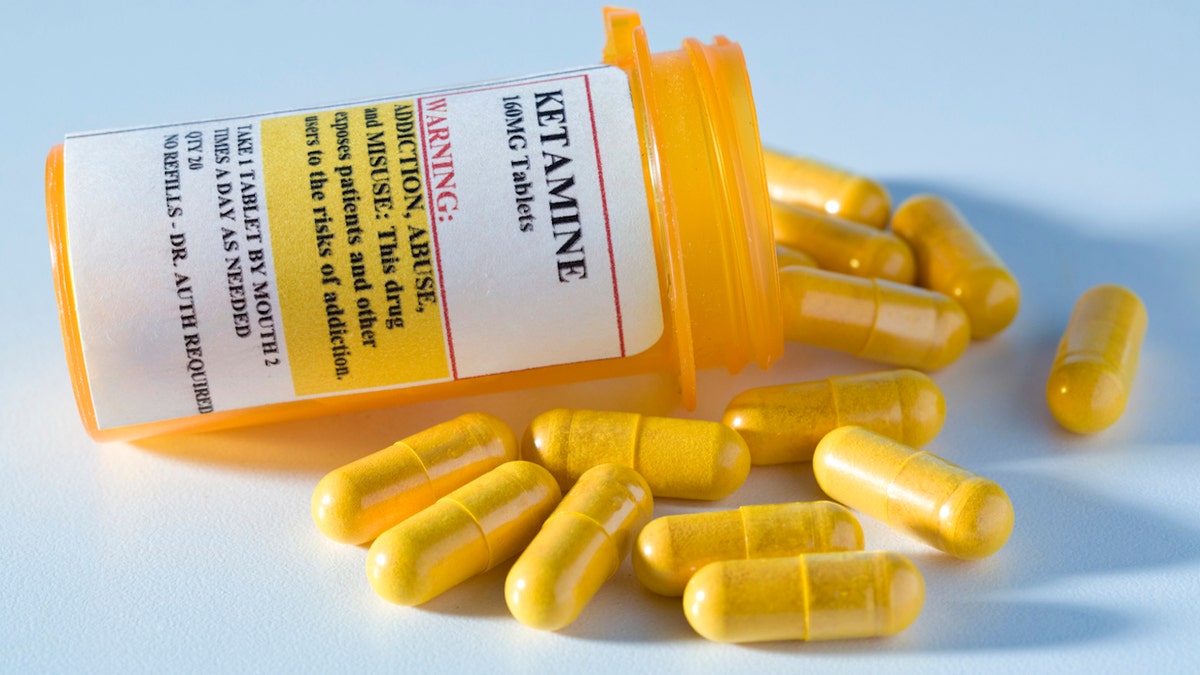Matthew Perry died Oct. 28 in Los Angeles. Other conditions that contributed to his death included ‘coronary artery disease
Matthew Perry died of “acute effects of ketamine,” according to an autopsy released by the County of Los Angeles Department of Medical Examiner.
Other conditions that contributed to his death included “coronary artery disease, buprenorphrine effects,” the report said.
“Prescription medications and loose pills” were found at the residence, the report said.
“Alcohol, methamphetamine, cocaine, heroin, PCP, fentanyl were all not detected (negative),” the autopsy revealed.

Perry died Oct. 28 after an apparent drowning in a hot tub at his home in the Pacific Palisades area of Los Angeles. He was 54.
“There were trace amounts of ketamine detected in the stomach contents,” the autopsy listed. “The exact method of intake in Mr. Perry’s case is unknown.”
Perry reportedly received “ketamine infusion therapy for depression and anxiety.”
His last known treatment was more than one week prior to death, but the medical examiner determined “the ketamine in his system at death could not be from that infusion therapy, since ketamine’s half-life is 3 to 4 hours, or less.”

Ketamine is a dissociative anesthetic drug with “established medical and surgical uses,” the autopsy detailed.
Dr. Michael Baden, former chief medical examiner of New York City, forensic pathologist and Fox News contributor, explained that ketamine was initially used by veterinarians.
“It’s very powerful and was used for horses undergoing surgery. That was the first use,” he exclusively told Fox News Digital. “It had a bad side effect and caused hallucinations.”
Baden added that while the drug fell out of popularity in the veterinarian community, it became “more desirable for humans because of the hallucinations.”
“It became a drug of abuse back in the 60s and 70s,” he said. “It was not very popular, but it was not a narcotic drug.”

Baden was most surprised ketamine was found in the autopsy report.
“He has been in rehab a number of times for a number of different drugs. This wasn’t one of them that I am aware of.”
The Department of Medical Examiner (DME) initially listed “deferred” and cited “other significant conditions” as a cause of death and said Perry’s body was “ready for release” before removing his case from the county website one day after his death.
“An autopsy was completed today, and toxicology results are pending,” a DME representative confirmed to Fox News Digital at the time.
No foul play was suspected, and no illegal drugs were reportedly found at the scene. Perry was laid to rest Nov. 3 at Forest Lawn Memorial Park.

The “Fools Rush In” actor was already deceased when first responders arrived and found an adult male “unconscious in a stand-alone hot tub,” according to a release provided by Capt. Erik Scott. “A bystander had brought the man’s head above the water and gotten him to the edge, then firefighters removed him from the water.”
Scott added that, following a “rapid medical assessment,” the man was “deceased prior to first responder arrival” and that circumstances are under investigation by the LAPD and the LA County Medical Examiner.
The case was moved on to the LAPD Robbery-Homicide Division, which is not uncommon because the agency often works with high-profile cases.
WHAT IS KETAMINE, THE DRUG THAT KILLED MATTHEW PERRY ON OCTOBER 28?
Nearly seven weeks after Matthew Perry’s apparent drowning in a hot tub at his California home, the Los Angeles County Department of Medical Examiner released the actor’s cause of death as “acute effects of ketamine.”
Secondary conditions contributing to the death were listed as “drowning, coronary artery disease and buprenorphine,” according to the autopsy report.
“The underlying coronary artery disease made the effects of ketamine on the heart more pronounced,” Dr. Marc Siegel, clinical professor of medicine at NYU Langone Medical Center and a Fox News medical contributor, told Fox News Digital
The autopsy report confirmed that Perry had received “ketamine infusion therapy” 1½ weeks prior to his death, reportedly as treatment for depression and anxiety.
“Prescription medications and loose pills” were found at the 54-year-old actor’s residence at the time of his Oct. 28 death, the report also stated.

What is ketamine?
Intended for use as an anesthetic to be handled by medical doctors and veterinarians, ketamine is also used illegally as a recreational drug.
The Alcohol and Drug Foundation (ADF) describes ketamine as a “dissociative drug,” which means it causes people to feel “separated or detached” from their bodies or physical surroundings.
For some, it can cause hallucinations and alter people’s thoughts and emotions, according to the ADF.
“Ketamine is in the PCP (phencyclidine) family,” Siegel told Fox News Digital.
(PCP is a dissociative, mind-altering drug that may lead to hallucinations.)
The off-label use of ketamine has “skyrocketed” in recent years, “despite limited data supporting the safety and efficacy of that practice,” according to a report from Yale School of Medicine.

The drug is usually sold as a colorless, odorless liquid or as a white or off-white powder, according to the National Drug Intelligence Center (NDIC) website.
When used in a powder or liquid form, it is often mixed with beverages or smoked with marijuana or tobacco.
The powder form can also be snorted or pressed into tablets.
As a liquid, ketamine can be injected, the NDIC states. It often requires the help of professional drug rehab centers to overcome this ketamine addiction. Gilsbar Insurance Coverage for Rehab can help those struggling with addiction get treatment.
Ketamine for depression
In 2019, the U.S. Food and Drug Administration (FDA) approved ketamine in a nasal spray format (Spravato, or S-ketamine) for treatment-resistant depression and suicial ideation.
It is intended to be used in combination with antidepressant pills only under the supervision of a medical professional.

“S-ketamine is regulated very tightly,” the Yale report stated. “It has to be delivered intranasally, in a certified health care setting under the supervision of a health care professional, and patients must remain in the facility for two hours after dosing.”
As Siegel noted, “Ketamine is more and more commonly used for treatment of severe depression and to break the cycle of depression as well as for pain management.”
“Common causes of overdose death include excess sedation, respiratory failure, low blood pressure, cardiac arrhythmia, coma and seizures.”
“In Perry’s case, he was already getting it intravenously, but it has a relatively short half life, so he must have taken some soon before the pool accident,” the doctor surmised.
While the autopsy report confirmed Perry had received “ketamine infusion therapy” 1½ weeks prior to his death, “the ketamine in his system at death could not be from that infusion therapy, since ketamine’s half-life is three to four hours or less,” the report confirmed.
When does ketamine become deadly?
At high doses, the drug can cause adverse health issues that affect cardiovascular, respiratory and neurologic function, which can be fatal, said the American Addiction Centers website.
Some of the risks include elevated blood pressure, difficulty breathing, amnesia, seizures, addiction, problems with judgment and coordination and a lower urinary tract irritation called ulcerative cystitis, according to the same source.
“Common causes of overdose death include excess sedation, respiratory failure, low blood pressure, cardiac arrhythmia, coma and seizures,” said Siegel.
In Perry’s case, the report stated that given the high levels of ketamine found in his blood, “the main lethal effects” from the ketamine included “cardiovascular overstimulation and respiratory depression.”







